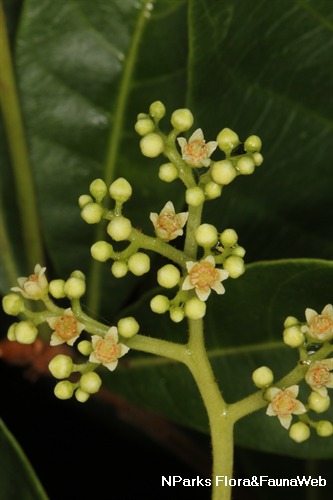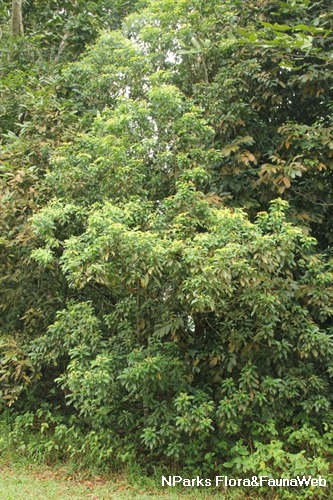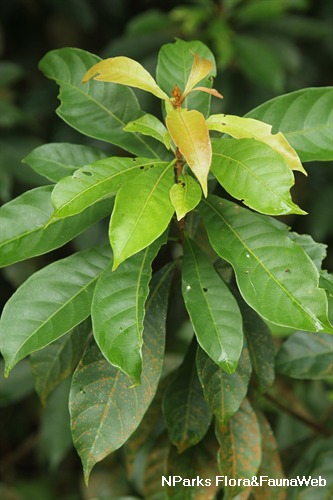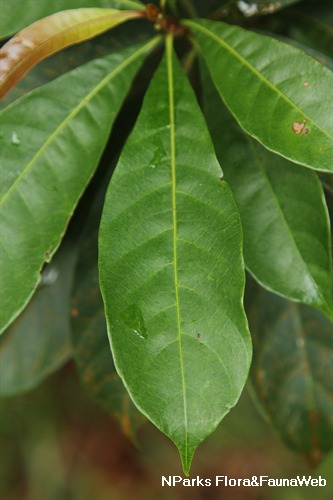
Name
Classifications and Characteristics
| Plant Division | Angiosperms (Flowering Seed Plants) |
|---|---|
| Plant Growth Form | Tree |
| Lifespan (in Singapore) | Perennial |
| Mode of Nutrition | Autotrophic |
Biogeography
| Native Distribution | Thailand, Peninsular Malaysia, Sumatra, Borneo |
|---|---|
| Native Habitat | Terrestrial |
| Preferred Climate Zone | Tropical |
| Local Conservation Status | Native to Singapore (Endangered (EN)) |
Description and Ethnobotany
| Growth Form | Large tree, able to grow up to about 10 - 20 m tall. |
|---|---|
| Trunk | Girth size can be up to 30 cm wide. |
| Foliage | Green leaves, lanceolate to oblanceolate in shape, measuring about 8 - 16 cm long and 3.8 - 6.3 cm wide, leaf surface glabrous. |
| Flowers | Greenish-white flowers borne on a panicle inflorescence, flower usually about 0.3 cm wide, 5 round sepals, 5 to 6 petals oblong in shape, stamens about 8 to 10 present. |
| Fruit | Fruit is somewhat cordate to round in shape, light green, measuring about 0.9 cm long. |
| Etymology | Genus Buchanania is named after Francis Hamilton (1762 - 1829), a Scottish botanist who studied the lands possessed by the East India Company. |
Landscaping Features
| Desirable Plant Features | Ornamental Flowers |
|---|---|
| Landscape Uses | Parks & Gardens, Small Gardens |
Plant Care and Propagation
| Light Preference | Full Sun |
|---|---|
| Water Preference | Moderate Water |
| Plant Growth Rate | Moderate |
| Rootzone Tolerance | Moist Soils, Well-Drained Soils |
| Propagation Method | Seed |
Foliar
| Mature Foliage Colour(s) | Green |
|---|
Floral (Angiosperm)
| Flower Colour(s) | Green, White |
|---|---|
| Flower Grouping | Cluster / Inflorescence |
Fruit, Seed and Spore
| Mature Fruit Colour(s) | Green |
|---|
Image Repository
Others
| Master ID | 29334 |
|---|---|
| Species ID | 3643 |
| Flora Disclaimer | The information in this website has been compiled from reliable sources, such as reference works on medicinal plants. It is not a substitute for medical advice or treatment and NParks does not purport to provide any medical advice. Readers should always consult his/her physician before using or consuming a plant for medicinal purposes. |





_lowres.jpg)